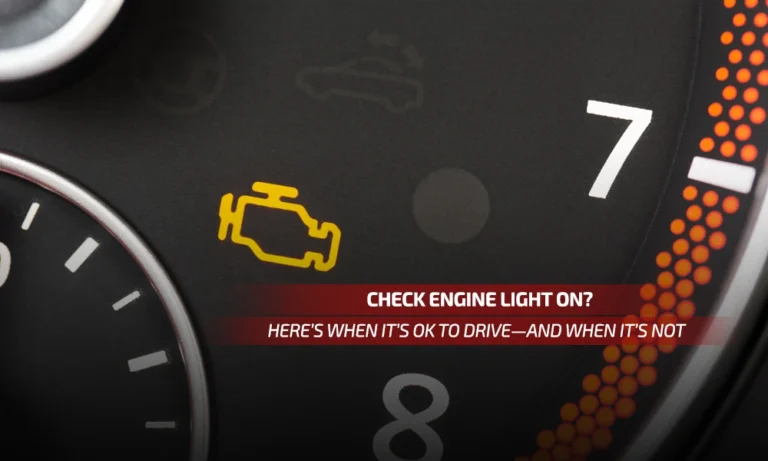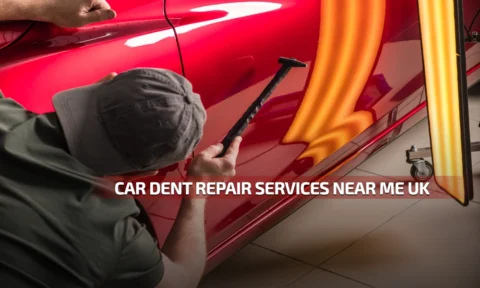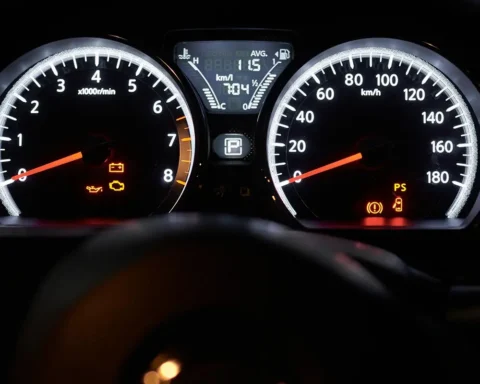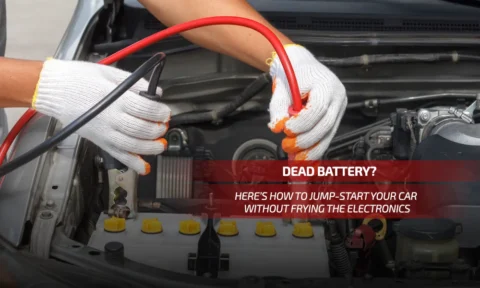*Ting* comes the check engine light on.
You now have two options:
Keep driving or Visit the nearest service centre ASAP
Which one do you choose?
I wish it were just as easy as choosing one of the two, but it’s not.
You can be far away from a garage, in which case, what would you do?
If you’re not sure, do not worry. I’m here with a solution, in the form of this blog.
Let’s drive right into it.
What You Should Do Next
- Grab an OBD-II code reader or visit an auto parts store—many offer free scans.
- Look up the code, even if you don’t share it with your mechanic. Transparency helps them diagnose faster and avoid upsells.
- Share the repair history of your car as additional context—especially if addressing recurring issues.
When to Call It and Stop Driving
Even without a CEL flashing, here are three telling signs you must stop now:
- Engine stalling or rough idle
- Noticeable loss of power
- Strange noises from the engine bay (knocking, ticking, heavy vibration)
If any of these happen with the CEL on, don’t chance it—you’re deep in trouble territory.
Why It’s Smarter to Act Than Delay
- Cost-saving: A $100 sensor or plug costs a fraction of a $2,500 catalytic converter.
- Safety: Engine misfires can flood cylinders or cause unexpected stalling on highways.
- Compliance: Some countries have emissions checks tied to CEL status; even a steady light can fail an MOT or equivalent.
When it comes to maintenance of your car, you should always be on your toes.
The machine is too big and complex, so even the slightest of issue can cause a bigger breakdown later on.
Never play with your chances when it comes to car maintenance.
What the Check Engine Light Really Means
That warning light isn’t just one alarm—it covers a whole spectrum of issues.
From a loose gas cap to a failing catalytic converter, the On-Board Diagnostics (OBD-II) system tracks hundreds of sensors.
The CEL lights up when something falls out of spec.
The important thing: not all CELs are showstoppers.
Some are minor. Some require you to pull over now. Knowing the difference matters.
How to Know If It’s Safe to Keep Driving
- Solid, steady light
- Usually minor issues like a loose cap, slightly rich AFR (air-fuel ratio), or a misfire that corrected itself.
- Action: Tighten the gas cap, monitor for performance issues, and book a scanner check within a few days to avoid long-term damage.
- Usually minor issues like a loose cap, slightly rich AFR (air-fuel ratio), or a misfire that corrected itself.
- Flashing or blinking light
- That’s not a notification—it’s an emergency alarm. Often indicates a severe engine misfire, risking overheating or damaging your catalytic converter.
- Action: Pull over safely, switch off the engine, and either call roadside support or drive very slowly to the nearest garage.
- That’s not a notification—it’s an emergency alarm. Often indicates a severe engine misfire, risking overheating or damaging your catalytic converter.
The Danger of Ignoring a Steady CEL
Let’s get real: a steady light today can turn into a blown catalytic converter tomorrow.
In many cases, a cheap fix like a sensor replacement abruptly morphs into a €2,000+ repair.
Backroad runs or city driving with CEL on? You’re risking bigger problems later.
Quick CEL Response Cheat Sheet
| CEL Status | Action Required |
| Steady light | Safe to drive short distance; scan within days |
| Flashing light | Immediate stop; repair needed before driving |
| Engine issues | Stop now—do not drive until repaired |
When It’s Just a Loose Gas Cap
Before panic sets in, check this:
- Unscrew your gas cap, inspect it for cracks or damage, then screw it back until it clicks firmly.
- After 3 ignition cycles, the CEL may reset on its own.
Yes, it really can be that simple—but only if you follow up with a proper check.
What Do We Learn?
The Check Engine Light isn’t just a mood-setting dashboard icon. It’s your car’s way of handing you important real-time feedback.
You can ignore it, but only at your own risk.
A blinking CEL demands attention now.
A steady one needs addressing before your next trip. And a loosely tightened gas cap?
That’s the low-hanging fruit—fix it and move on.
Treat your check engine light as your car’s voice—not a suggestion. Sort it smartly, and you’ll save yourself time, money, and stress.
Keep your engine breathing easy and enjoy the drive.







